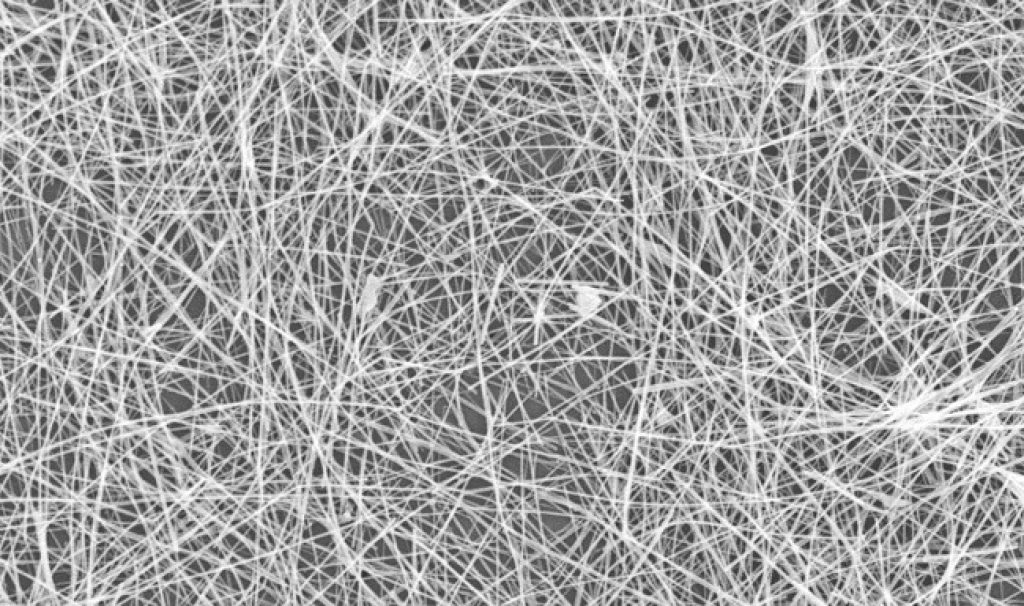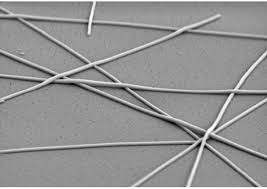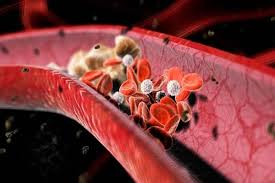Types of Nano Wires Nano Wiers PhD Nano _ Microelectronics
Researcher and author: Dr. ( Afshin Rashid)
Note: Nanowires are used in the manufacture of computer nanoparticles that use light instead of electricity to create high computational speeds.
Making nanocomputers that use light instead of electricity to create high computational speeds . In military cases, biologically diagnosing cancers and other complex diseases with just a drop of blood, improving and modifying smart cards ; Used nano military drones and drones.
Another nanostructure that has been studied and researched today is nanowires. A wire is generally a structure that extends in one direction (longitudinal direction) and is very limited in the other two directions . An essential feature of these structures, which have two outputs, is electrical conductivity. Electrical charge transfer occurs by applying a difference in electrical potential at both ends of these structures and along their length. Making wires in nanometer dimensions is very interesting both technologically and scientifically, because in nanometer dimensions, they have unusual properties . The ratio of length to diameter of nanowires is very high.
Examples of the use of nanowires are:
- Magnetic devices,
Chemical and biological sensors,
Biological markers and internal connections in nanoelectronics, such as the connection of two pieces of aluminum superconductor made by silver nanowires .
Types of nanowires:
Metal nanowires: These nanostructures promise great performance in electronic components due to their special properties. Metal nanowires are one of the most attractive materials due to their unique properties that lead to their various applications . Nanowires can be used in computers and other computing devices. To achieve complex nanoscale electronic components, we need nanoscale wires. In addition, nanowires themselves can be the basis of electronic components such as memory.
Use of nanowires in nano biological processors
Organic nanowires: These types of nanowires, as their name implies, are derived from organic compounds. In addition to metallic and semiconductor materials, nanowires can also be made from organic materials. Recently, a substance called "oligophenylene vinyl" has been developed for this purpose. The characteristics of these wires (such as conductivity and resistance and thermal conductivity) depend on the structure of the monomer and its arrangement.
Conductor and semiconductor nanowires in the propagation of nanochips: The chemical structure of these compounds produces interesting properties. The future of nanotechnology depends on the ability of researchers to acquire techniques for organizing molecular components and nanometer structures. By imitating nature, they organize the dough proteins to produce conductive nanowires. Organizing living components in nature is the best and oldest example of "bottom-up" construction, and therefore it can be used to understand and find ways to make electronic and micrometer devices. Until now, "top-down" manufacturing techniques have been used, which are often laborious and costly at the nanometer scale, and the commercialization of nanotechnology requires easy and cost-effective methods that best Its pattern is the nature around us; All we have to do is open our eyes a little and look around more carefully. Silicon nanowires: These types of nanowires are non-toxic and do not damage cells. This type of nanowires has shown its greatest application in medicine, such as detecting the symptoms of cancer, stem cell growth, etc. , which we will discuss below.
Application of nanowires in disease diagnosis and structure (nano _ bio chip) : Nanowires made from materials used in today's computer chips such as silicon and gallium nitride can be used to diagnose diseases. You may ask what computer tools have to do with the diagnosis of disease and the human body . The human body, like a computer, must have sensors that can warn of external warning devices in the event of a problem or error or the presence of toxic substances, such as A computer that gives an ERROR message if you run it in the wrong direction or a virus is found. Produce flexible, long nanowires with variable lengths ranging from 1 to 100 nm or even atIt is millimeters and is about a thousand times thinner than human hair in comparison. The height, flexibility and strength of these nanowires give it special properties. For example, being thin and long increases its surface area. Therefore, these structures can be used in the design of very fast and sensitive sensors. These nanowires have the ability to produce invisible ultraviolet rays, light enters the nanowire from one end and begins to shine from the other end. Nanowires pass this light efficiently without any loss. And in its path, if it encounters a pathogen or a toxic substance, the nanowire starts to shine and creates a very fast warning system , which can detect the disease sooner and faster than any test.
Using nanowires to make nanobots in blood vessels to stimulate the nerves of the brain: Always carry small transmitters into the arteries and direct them to the desired locations. Create platinum nanowires that are 100 times thinner and finer than human hair. They send these nanowires into blood vessels and direct them to the nerves of the brain through a small camera. This method is very useful to help find the various causes and emergence of neurological diseases, including Parkinson's. In the past, to find the various causes of heart and neurological diseases, the body was dug anywhere to find the cause of the disease, but today A device can be delicately, thinly and sensitively invented and even sent into the most delicate vessel.
Conclusion:
Nanowires are used in the manufacture of diagnostic nano-biosensors. Nanowires made from materials used in today's computer chips such as silicon and gallium nitride can be used to diagnose diseases.
Researcher and author: Dr. ( Afshin Rashid)
PhD in Nano-Microelectronics







